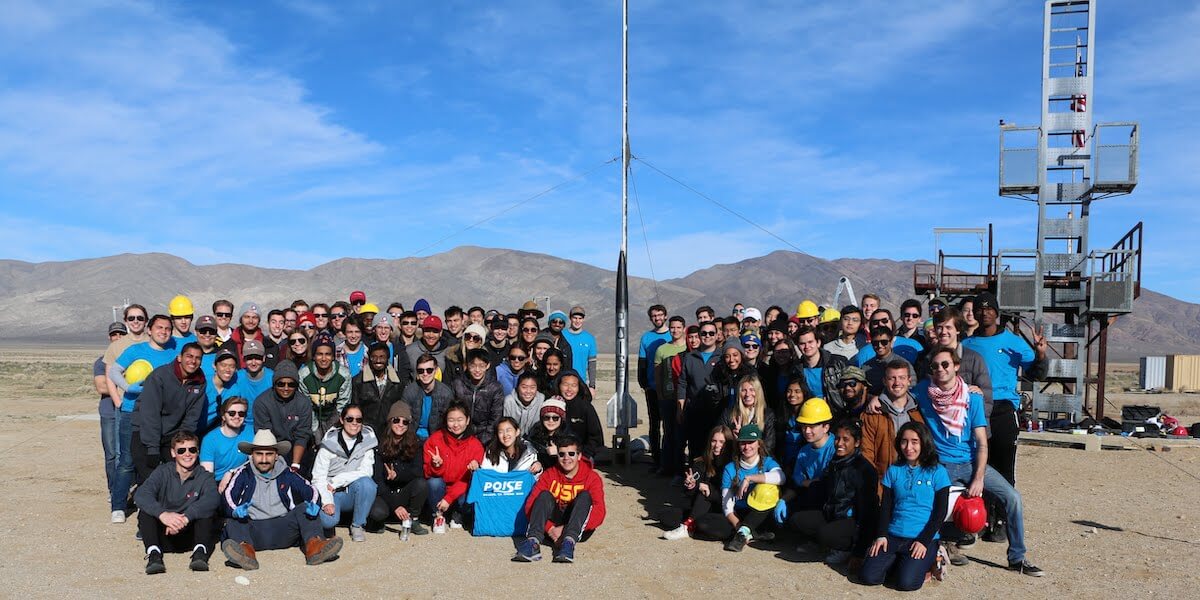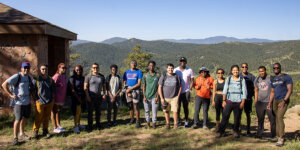
USC Rocket Propulsion Laboratory launches its latest rocket Poise. PHOTO/USCRPL.
After setting the student world altitude record with Traveler IV, the USC Rocket Propulsion Laboratory (USCRPL) hoped to soar to new heights measured not by feet or inches, but by design. Poise, the most recent rocket successfully launched by USCRPL, tested a handful of new R&D projects, including a new propellant, a two-part recovery system and a “black box.”
Poise was launched on January 24, under the blue skies of the Mojave desert, among several new members of the USCRPL team. The motor had a total impulse of around 8,500 lbf*s and ascended Poise to an apogee—peak height—of 31,090 feet. Along the way, it proved out a new “extrudable” propellant formula that is less viscous than prior propellants, lending itself to a lower burn rate and easier manufacture of motor grains. It also validated a new avionics (flight electronics) component called the “black box,” which was created to supplement existing tools to increase precision and certainty when calculating apogee and the rocket’s flight path.
A project of USCRPL sophomores during the 2018-19 school year, Poise also featured a new nozzle made entirely of carbon phenolic, instead of a combination of the same material with graphite. This helps simplify nozzle manufacturing, and creates a lightweight option that offers greater heat protection.
USC Viterbi mechanical engineering senior and lab lead for USCRPL Neil Tewksbury said, “The launch of Poise perfectly represented what USCRPL is because there were a number of technical challenges that we overcame to fly a rocket in professional manner, while learning a lot along the way. The now-juniors managed to learn about our technology, improve upon it, and design and build a launch vehicle all by the end of their sophomore year.”
Also featured on Poise was a dual deployment recovery system, which did not perform as expected. The case separated from its parachute around the time of deployment, resulting in the loss of the rocket body, which contained cameras and the black box. Ultimately, the members of USCRPL were able to recover the nosecone—the forwardmost part of the rocket—which contained the avionics unit.
Cameron Spence, USC Viterbi astronautical engineering junior and USCRPL recovery lead, said: “The flight itself looked great and while things didn’t go exactly as planned on the way down, parachute separation is a new problem that I am excited to work towards a solution for.”
Published on February 19th, 2020
Last updated on February 19th, 2020













